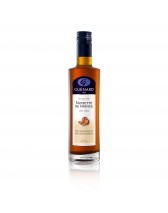
The origins of Chandeleur, or Candlemas Day
The history of Candlemas lies at the intersection of pagan traditions and Christian celebrations. In the month of February, during the period where the first seeds of the season were sown, many celebrations were held to invoke the gods of fertility and harvest in the hopes of bringing good fortune.
These pagan rites involved asking for the return of favorable weather conditions and for a favorable harvest by eating round, golden brown cakes, resembling the sun, a vital source of energy of the crops. The Celts worshipped Imbolc, the goddess of fertility, and held torchlight processions in her honor on February 1st. For the Romans, Lupercalia was worshipped on February 15th in a celebration in honor of Faunus, god of herds and fertility. Meanwhile, the Greeks lit torches and celebrated the return of Persephone, queen of the Underworld, along with her mother Demeter, goddess of Agriculture. Crepes were always eaten in different forms for these occasions.
At the end of the 5th century, Pope Gelasius I abolished the celebration of Lupercalia in order to celebrate Mary’s presentation of the infant Jesus in the temple of Jerusalem on February 2nd, 40 days after the birth of Christ. From the Middle Ages onward, pilgrims began to go to Rome and carry blessed candles to celebrate the presentation of Jesus. From carrying great torches in the beginning, to smaller torches, then alter candles, to finally smaller candles, the celebration of Candlemas got its name.
When pilgrims reached Rome, Pope Gelasius I offered them something to eat. Instead of bread, he offered thin pancakes. The celebration came full-circle, and crepes were again eaten on February 2nd. And so the tradition of eating crepes on Candlemas Day has become widespread among Christians and non-Christians alike.
Now that the history of Candlemas Day is no longer a mystery to you, head to your kitchen and tryour Guénard Hazelnut Oil crepe recipe!
Happy Candlemas Day!





